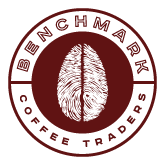The world of coffee is big. It has many different submarkets which can have varying standards,
preferences, and procedures. We focus on what can be referred to as the third wave specialty market, which values ethical sourcing, quality, and relationships among other things. With regards to green coffee, it also sometimes operates under fixed-pricing models as opposed to the global standard of differential pricing, which pegs the price of a certain coffee against the international “C-market” price at the time of contracting. “C” plus a certain dollar amount may be charged for above average quality and “C” minus a certain dollar amount may be offered for very low quality coffees (more on the adverse effects of this pricing model at a later date). While we love the growing third wave market, it is useful and important to keep an eye on what is happening at the global macro level. As coffee is the second most traded commodity in the world, seemingly small ripples can create big waves. Currently, as the world continues to work through a whole host of issues, there’s a lot to keep an eye on. We regularly look at weather patterns, harvest cycles, and international shipping issues when forecasting our partners’ needs throughout the year. Here’s a glimpse at the present state of the global green coffee market, as compiled through several sources referenced below, along with our own commentary.
Arabica coffee futures on the Intercontinental Exchange (ICE, aka the C-market) recently surged to a 4- year high above $1.60/lb, amid shrinking supplies in Brazil and Vietnam, transportation problems, and civil problems in Colombia.
Arabica bean futures have risen 24% since October on the C-market, while U.S. green coffee inventories are down 8.3% from last year, as reported by Bloomberg. Weather, rain in particular in Brazil and Vietnam, the two largest coffee producers, will dictate the price. We expect both countries to have their total tonnage decreased due to poor weather.
In Brazil, a lack of rain has “affected initial coffee plant flowering,” though the extent of the impact is still unknown. The drought is expected to continue through August which is “not a good sign for the 2022/23 crop.” Dry weather in recent months has lowered output expectations for the harvest season that has already started, and the 2022 harvest is already at risk as well.
Also, Brazil entered an off-year in its biennial crop cycle and the uncertainty around production volumes is deterring producers from selling significant quantities.
In Vietnam, where the harvest is currently underway, too much rain has put “the coffee bean harvest well behind the pace,” which keeps producers from picking their crops at their ripest as well as properly drying them, both of which will affect the output.
Elsewhere, road blockades connected to anti-government protests in Colombia, the worlds second largest arabica exporter, are blocking coffee exports. Colombia and many other origins also experienced issues with recruiting enough pickers during the 2020 season. Since medium and large farms typically recruit migrant workers during the main harvest season, travelling bans during 2020 left many understaffed. Significant amounts of cherry have been reported left on the trees without enough pickers to pick it all.
Crop failures, foul weather, and supply chain disruptions at ports are all among the contributing factors affecting prices.
Shipping inflation is also affecting the movement of the shipping containers coffee is transported in. Estimates say there are 17 million shipping containers around the globe, but only 6 million are in active use at present. Some blame the container shortage on the pandemic, which left ports congested and low on personnel to offload ships. The Freightos Baltic Index pegs the overall increased shipping costs up 165% from last year, Politico reported.
On the demand side, in the US and elsewhere, the success of vaccination rollouts has led to increased demand which supports the belief that an even stronger rebound in coffee demand is soon due as the recovery continues.
Origins are still feeling the effects of covid and production in many origins is down as producers try to recover from 2020. At present, logistics, supply and demand imbalances, and inflation are key problems.
While this may all seem dire, shipping and logistics issues are expected to normalize as port congestion clears and demand stabilizes, though it may get worse before it gets better. Weather challenges are normal and cyclical. It’s unfortunate that the coffee world is dealing with all of these issues at the same time, but the chaos will ease in due course.
For Benchmark, we have good relationships with freight forwarders at our export port which has helped us to secure our shipping containers. Our producer-partners have continued production and, due to the free housing for pickers among the other social projects, most pickers live on the estate year-round. This helped avoid a picker shortage. Cyclically lower yields and shipping challenges have not made this an easy year, but we are keeping the beans coming and we are grateful to do so. We have adjusted our shipping schedules to accommodate the delays as much as possible and we will continue to monitor the situation. The people need their coffee and we’re here to serve! The cold brew will flow this summer – remember to support your local roaster!
References: Sprudge, Forbes, Food Institute, Trading Economics, Politico

